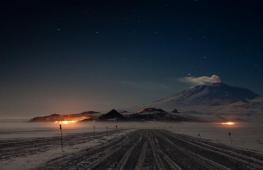What is the equator and what is its length?
Every time we study the world map, the equator seems to us such a significant detail that it can be difficult to believe in its conditional existence.
The equatorial line can be crossed many times without even noticing it, but there is a wonderful tradition among sailors to arrange real festivities when their ship passes the equator across the sea. What is meant by this concept? What is the length of the equator and why did scientists need to draw it on maps?
What does the word "equator" mean?
Term "equator" associated with the Latin word aequator, meaning "balance, balance" . At the same time, its initial interpretation correlates with the more ancient Proto-Indo-European concept of aik, translated as “smooth”.
The term came into Russian speech from Germany, from where our ancestors borrowed the German word Äquator.
What is the equator?
The equator is an imaginary line that encircles our planet and passes through its center. The line is laid perpendicular and is at the same distance from the North and South Poles. Since the planet is not strictly spherical in shape, when designating the equator, scientists adopted a conditional circle, the radius of which is equal to the average radius of the Earth. 
All lines that pass south and north of the equator are called parallels and are inferior to it in length. In the region of the equatorial line, hot summer always reigns, and the day equals the night. Only here the Sun can be at its zenith, that is, shine strictly vertically with respect to the earth's surface.
Where is the equator?
The equator divides the Earth into the southern and northern hemispheres and acts as the starting point for the geographical latitude. The conditional line stretches through 14 countries, including Ecuador, Brazil, Indonesia, Kenya, Congo. In some places, the equator passes in such a way that it bisects individual settlements and geographical features.
In particular, the Ecuadorian capital of Quito, the Brazilian city of Macapa and the Ecuadorian Wolf volcano are located directly on the line. In addition, the equator crosses 33 islands in Indonesia, on the African Lake Victoria on the Amazon River.
What is the length of the equator?
To do this, he had to measure the time during which the rays of the Sun reached the well in his courtyard, and then calculate the length of the radius of the planet and, accordingly, the equator. According to his calculations, the equatorial line was equal to 39,690 km, which, with a small error, practically corresponds to the modern value.
Subsequently, astronomers and mathematicians from many countries of the world tried to calculate the length of the equator. At the beginning of the 17th century, the Dutch scientist Snellius proposed to determine the length of the line without taking into account the obstacles located on it (hills, mountain ranges), and in 1941 the Soviet surveyor Fyodor Krasovsky managed to calculate the length of the Earth's ellipse, which is currently the standard for scientific research.
The actual length of the equator, which is 40,075.696 km, was taken as a basis by the international organizations IAU and IUGG, taking into account an error of 3 meters, which reflects the existing uncertainty in the average radius of the planet.
Why is the equator needed?
The equator on geographical maps helps scientists make calculations, determine the location of various objects, and navigate the Earth's climatic zones. Being closest to the Sun, the imaginary line receives the most sunlight, respectively, the further certain territories are located from the equator, the colder they are. 
The length of the equator is one of the key metric values of the globe. It is used in geodesy and geography, and is also used in sciences such as astrology and astronomy.


